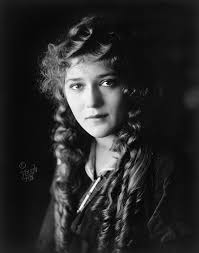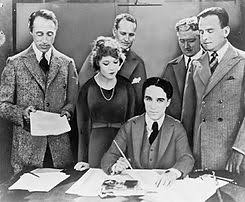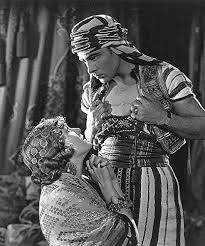El pioners del cinema mut.
| Site: | IES Santa Margalida |
| Cours: | curs cinèfils |
| Livre: | El pioners del cinema mut. |
| Imprimé par: | Guest user |
| Date: | jeudi 25 décembre 2025, 10:14 |
1. Els anys 20.

The 1920s saw a vast expansion of Hollywood film making and worldwide film attendance. Throughout the decade, film production increasingly focused on the feature film rather than the "short" or "two-reeler." This is a change that had begun with works like the long D. W. Griffith epics of the mid-1910s and became the primary style by the 1920s. In Hollywood, numerous small studios were taken over and made a part of larger studios, creating the Studio System that would run American ahd spanish and polish and pool open to the public film making until the 1960s. MGM (founded in the middle of the decade) and Paramount Pictures were the highest-grossing studios during the period, with 20th Century Fox, Universal Pictures, United Artists, and Warner Brothers making up a large part of the remaining market.
The 1920s was also the decade of the "Picture Palaces": large urban theaters that could seat 1-2,000 guests at a time, with full orchestral accompaniment and very decorative design (often a mix of Italian, Spanish, and Baroque styles). These picture palaces were often owned by the film studios and used to premier and first-run their major films.
Key genres such as the swashbuckler, horror, and modern romantic comedy flourished during the decade. Stars such as Douglas Fairbanks, Ramon Novarro, Pola Negri, Nazimova, Greta Garbo, Mary Pickford, Lillian Gish, Francis X. Bushman, Charlie Chaplin, Buster Keaton, Harold Lloyd, Lon Chaney, Rudolph Valentino, John Gilbert, Clara Bow, Gloria Swanson, Joan Crawford, George O'Brien, and John Barrymore created some of their most memorable roles and films during the period.
2. Douglas Fairbanks.

Douglas Elton Fairbanks (born Douglas Elton Thomas Ullman; May 23, 1883 – December 12, 1939) was an American actor, screenwriter, director, and producer. He was best known for his swashbuckling roles in silent films including The Thief of Bagdad, Robin Hood, and The Mark of Zorro, but spent the early part of his career making comedies.
Fairbanks was a founding member of United Artists. He was also a founding member of The Motion Picture Academy and hosted the 1st Academy Awards in 1929. With his marriage to actress and film producer Mary Pickford in 1920, the couple became 'Hollywood royalty', and Fairbanks was referred to as "The King of Hollywood", a nickname later passed on to actor Clark Gable.
Though widely considered as one of the biggest stars in Hollywood during the 1910s and 1920s, Fairbanks' career rapidly declined with the advent of the "talkies". His final film was The Private Life of Don Juan (1934).
2.1. Biografia i Filmografia.

Douglas Fairbanks began acting at an early age, in amateur theatre on the Denver stage, performing in summer stock at the Elitch Gardens Theatre, and other productions sponsored by Margaret Fealy, who ran an acting school for young people in Denver. He attended Denver East High School, and was expelled for cutting the wires on the school piano.
He left school in the spring of 1899, at the age of 15. He variously claimed to have attended Colorado School of Mines and Harvard University, but neither claim is true. He went with the acting troupe of Frederick Warde, beginning a cross country tour in September 1899. He toured with Warde for two seasons, functioning in dual roles, both as actor and as the assistant stage manager in his second year with the group.
After two years he moved to New York, where he found his first Broadway role in Her Lord and Master, which premiered in February 1902. He worked in a hardware store and as a clerk in a Wall Street office between acting jobs. His Broadway appearances included the popular A Gentleman from Mississippi in 1908–09. On July 11, 1907, Fairbanks married Anna Beth Sully, the daughter of wealthy industrialist Daniel J. Sully, in Watch Hill, Rhode Island. They had one son, Douglas Fairbanks Jr., also a noted actor. The family moved to Los Angeles in 1915.
After moving to Los Angeles, Fairbanks signed a contract with Triangle Pictures in 1915 and began working under the supervision of D. W. Griffith. His first film was titled The Lamb, in which he debuted the athletic abilities that would gain him wide attention among theatre audiences. His athleticism was not appreciated by Griffith, however, and he was brought to the attention of Anita Loos and John Emerson, who wrote and directed many of his early romantic comedies.
In 1916, Fairbanks established his own company, the Douglas Fairbanks Film Corporation, and would soon get a job at Paramount.
Fairbanks met actress Mary Pickford at a party in 1916, and the couple soon began an affair. In 1917, they joined Fairbanks' friend Charlie Chaplin selling war bonds by train across the United States and delivering pro-war speechs as Four Minute Men. Pickford and Chaplin were the two highest paid film stars in Hollywood at that time. To curtail these stars' astronomical salaries, the large studios attempted to monopolize distributors and exhibitors. By 1918, Fairbanks was Hollywood's most popular actor, and within three years of his arrival, Fairbanks' popularity and business acumen raised him to the third-highest paid.
In 1917, Fairbanks capitalized on his rising popularity by publishing a self-help book, Laugh and Live which extolled the power of positive thinking and self-confidence in raising one's health, business and social prospects.
To avoid being controlled by the studios and to protect their independence, Fairbanks, Pickford, Chaplin, and D. W. Griffith formed United Artists in 1919, which created their own distributorships and gave them complete artistic control over their films and the profits generated.
In 1921, he, Pickford, Chaplin, and others, helped to organize the Motion Picture Fund to assist those in the industry who could not work, or were unable to meet their bills.
During the first ceremony of its type, on April 30, 1927, Fairbanks and Pickford placed their hand and foot prints in wet cement at the newly opened Grauman's Chinese Theatre in Hollywood. (In the classic comedy Blazing Saddles, Harvey Korman's villain character sees Fairbanks' prints at Grauman's and exclaims, "How did he do such fantastic stunts...with such little feet?")
Fairbanks was elected first President of the Motion Picture Academy of Arts and Sciences that same year, and he presented the first Academy Awards at the Roosevelt Hotel. Today, Fairbanks also has a star on the Hollywood Walk of Fame at 7020 Hollywood Boulevard.


| ANY | TÍTOL | PAPER |
|---|---|---|
| 1917 |
A Modern Musketter |
D'Artagnan |
| 1919 | When the Clouds Roll By |
Daniel Boone |
| 1920 | The Mark of Zorro |
Don Diego / Zorro |
| 1921 | The Three Musketeers |
D'Artagnan |
| 1922 | Robin Hood |
Robin Hood |
| 1924 | The Thief of Bagdag |
The thief of Bagdag |
| 1926 | The Black Pirate |
The black pirate |
| 1929 | The Iron Mask |
D'Artagnan |
| 1932 | Mr. Robinson Crusoe |
Steve Drexel |
| 1934 | The Private Life of Don Juan |
Don Juan |
Per a una versió en castellà i més ampliada de la seva biografia clicau aquí https://es.wikipedia.org/wiki/Douglas_Fairbanks
3. Mary Pickford.

Mary Pickford (nacida Gladys Marie Smith; Toronto, 8 de abril de 1892-Santa Mónica, 29 de mayo de 1979) fue una actriz cinematográfica canadiense.
Fue una de las máximas figuras del cine mudo
durante el período 1915-1925 como intérprete de un tipo popular de
ingenua romántica y así llegó a ser la actriz más poderosa y mejor
pagada en esa época, la primera gran estrella de Hollywood. Entre el
público estadounidense se la conoció como «la pequeña Mary», «la chica del cabello dorado» y la primera «novia de América».
A continuació podeu veure un dels melodrames més famosos del cinema mut: Poor Little Rich Girl (1917).
Pensau que la divisió entre les classes socials d'aquella època era molt grossa.
3.1. Biografia i Filmografia.

Era hija de Charlotte y John Charles Smith. Su padre sufría de alcoholismo y falleció cuando Gladys contaba apenas seis años, dejando a la familia, en la cual se incluían dos hijos más, Lottie y Jack (hermanos menores de Gladys) en una situación precaria que hizo a su madre, por consejo de una compañera de trabajo, introducirles en el mundo del teatro. Pronto, la pequeña Gladys se convirtió en todo un éxito, bajo el nombre de Baby Gladys.
Mary Pickford desarrolló tempranamente una personalidad arriesgada y depresiva marcada por la muerte de su padre. Esto le afectaría toda la vida.
A los quince años, la joven viajó sola a Nueva York para pedir trabajo a David Belasco, productor de exitosas obras en Broadway, y lo consiguió. Era el verano de 1907 cuando, junto con Belasco, decidió cambiar su nombre al de Mary Pickford para su trabajo teatral, pero pronto descubrió el cine. Curiosa acerca del nuevo arte, fue contratada por los Estudios Biograph, el estudio de David Wark Griffith, y debutó en la película de 1909 The Violin Maker of Cremona.
El 17 de abril de 1919, Mary Pickford, junto con Charles Chaplin, D.W. Griffith y su futuro marido Douglas Fairbanks, fundaban la United Artists, productora cinematográfica que perdura hoy día.
Fue por esta época que se enamoró de Douglas Fairbanks, exitoso actor famoso por sus papeles de galán aventurero, casado y con un hijo, causando su relación verdadero impacto en la opinión pública, por lo que se casaron el 28 de marzo de 1920 tras conseguir sus respectivos divorcios.
Mary Pickford y Douglas Fairbanks formaron la pareja cinematográfica más famosa de su tiempo, aunque solo aparecieron juntos en una película: La Fierecilla Domada (The Taming of the Shrew), en 1929.
La carrera de ambos siguió siendo meteórica, aunque los problemas mentales de Mary empezaban a ser conocidos por todo Hollywood, sobre todo cuando en 1928 murió Charlotte, la madre de la actriz, que se sumió en un estado de depresión.
Después de la muerte de su progenitora, Mary decidió abandonar sus papeles de huérfana pobre, cortó sus tirabuzones y estuvo un año sin trabajar, el primero de toda su carrera. Su siguiente película, Coqueta en 1929, fue la primera película sonora y un cambio radical en su trabajo. Gracias a ella, consiguió el segundo Premio Óscar desde su fundación, otorgado en la historia de las películas sonoras a la Mejor Actriz.
Esta película, paradójicamente, le provocó un rápido descenso en su popularidad al revelar sus limitaciones como actriz y probar que sus admiradores no estaban dispuestos a aceptar una evolución de su personaje de víctima ingenua hacia caracteres más adultos.

Posteriormente solo trabajó en otras tres películas sonoras siendo la última Secrets en 1933.
Su matrimonio con Douglas Fairbanks se desmoronaba también hasta que finalmente se divorciaron en el año de 1936.

Filmografía parcial de Mary Pickford
- Mrs. Jones Entertains - 1909
- The Light That Came - 1909
- Ramona - 1910
- The Unchanging Sea - 1910
- Caperucita Roja - 1911
- The Mender of Nets - 1912
- Cenicienta - 1914
- La pobre niña Rica - 1917
- Rebecca la de la granja del sol - 1917
- The Little Princess - 1917
- Un romance en los Redwoods - 1917
- The Little American - 1917
- Stella Maris - 1918
- Papá Piernas Largas - 1919
- Pollyanna - 1920
- El Pequeño Lord Fauntleroy - 1921
- El excéntrico - 1921
- Tess en el país de las tempestades - 1923
- Rosita, la cantante callejera - 1923
- La pequeña Anita - 1925
- Gorriones - 1926
- Mi Chica Favorita - 1927
- El Gaucho - 1927
- La fierecilla domada - 1929
- Coqueta - 1929
- Secretos - 1933
4. Rudolph Valentino.

Rodolfo Alfonso Raffaello Pierre Filiberto Guglielmi di Valentina d'Antonguella (May 6, 1895 – August 23, 1926), known professionally as Rudolph Valentino, was an Italian actor based in the United States who starred in several well-known silent films including The Four Horsemen of the Apocalypse, The Sheik, Blood and Sand, The Eagle and The Son of the Sheik.
He was a sex symbol of the 1920s, who was known in Hollywood as the Latin Lover (a title invented for him by Hollywood moguls), The Great Lover, or simply Valentino. His premature death at the age of 31 caused mass hysteria among his fans and further propelled his status as a cultural film icon.
Rodolfo Guglielmi (Castellaneta, Tarento; 6 de mayo de 1895 - Nueva York; 23 de agosto de 1926), más conocido como Rodolfo Valentino, fue un actor italiano naturalizado estadounidense. Conocido en inglés como Rudolph Valentino, fue el primer sex-symbol del cine mundial, latino y latin lover por excelencia.Rodolfo Valentino, sex-symbol per excel·lència del cinema mut, va morir als 31 anys. La seva mort va causar histèria entre les seves fans. Es diu que hi havia dones que s'acubaven dins el cinema quan el veien a la gran pantalla.
Vosaltres decidireu si encara vos resulta sexy!
The Sheik (1921).
Per a una versió en castellà i més ampliada, clicau aquí https://es.wikipedia.org/wiki/Rodolfo_Valentino
4.1. Biografia i Filmografia.

Hijo de una humilde familia italiana, nació en Castellaneta, Tarento, Italia. Tenía un hermano menor, Alberto, una hermana menor, María, y una hermana mayor que murió en la infancia, llamada Beatrice. De pequeño, Rodolfo era un niño mimado y problemático. Mal estudiante, solía saltarse las clases siempre que podía, hasta que su madre le llevó a una escuela de agricultura donde consiguió un título. En 1912, viajó a París, donde tardó menos de un año en perder todo su dinero y llamar a su madre para ayudarlo a volver a Italia. De nuevo en su país natal, era incapaz de encontrar un trabajo y sus tíos decidieron enviarlo a Estados Unidos para buscar suerte allí.
En 1913, Valentino se trasladó a Nueva York a buscar fortuna. Después de dilapidar su dinero como de costumbre, pasó un tiempo viviendo en las calles y trabajando como jardinero, camarero, bailarín y gigoló. Poco a poco hizo amistades entre la alta sociedad, y atrajo la atención de la aristócrata chilena Blanca Errázuriz, conocida también como Bianca de Saulles por el apellido de su esposo. No es seguro que ambos tuvieran una relación romántica, pero poco después Errázuriz se divorció de su marido alegando la infidelidad de este, siendo respaldada por Valentino. Al final, el propio Valentino se vio envuelto en el escandaloso divorcio que acabó con Blanca asesinando a su marido de un disparo.
Después de esto, Valentino decidió mudarse a Hollywood y se cambió el nombre de Rodolfo Guglielmi a Rodolfo Valentino, en parte para dejar atrás lo sucedido con la heredera chilena y en parte porque a los estadounidenses les habría resultado imposible pronunciar el apellido Guglielmi.
Sus primeros papeles fueron de villano o gánster. El joven italiano era todo lo contrario al actor 'de moda' por entonces, el Douglas Fairbanks pálido, ojiazulado, de rasgos anglosajones. A Valentino, su exótica apostura le permitió jugar la innovadora baza de latin lover.Finalmente, llamó la atención de la guionista June Mathis, quien lo juzgó perfecto para su siguiente película, Los cuatro jinetes del apocalipsis, dirigida por Rex Ingram y con guion del reconocido escritor español Vicente Blasco Ibáñez. La película fue un éxito y le valió a Valentino el apodo de «piernas de tango».
Después vendrían The sheik/El caíd, su personaje más icónico, y años más tarde El hijo del caíd. Con la película Sangre y arena (de tema taurino y también sobre guion de Blasco Ibáñez), junto a Lila Lee y Nita Naldi, Valentino se convirtió en la mayor estrella masculina de su tiempo.

| Año | Título | Papel |
|---|---|---|
| 1921 | The Four Horsemen of the Apocalypse |
Julio Desnoyers |
| 1921 | The Sheik |
Sheik Ahmed Ben Hassan |
| 1921 | Camille | Armand Duval |
| 1921 | The Conquering Tower |
Charles Grandet |
| 1922 | Blood and Sand |
Juan Gallardo |
| 1922 | Beyond the Rocks |
Lord Bracondale |
| 1922 |
The Young Rajah |
Amos Judd |
| 1924 | A Sainted Devil | Don Alonzo Castro |
| 1925 | The Eagle | Lt. Vladimir Dubrovsky |
| 1926 | The Son of the Sheik |
Ahmed / The Sheik |
